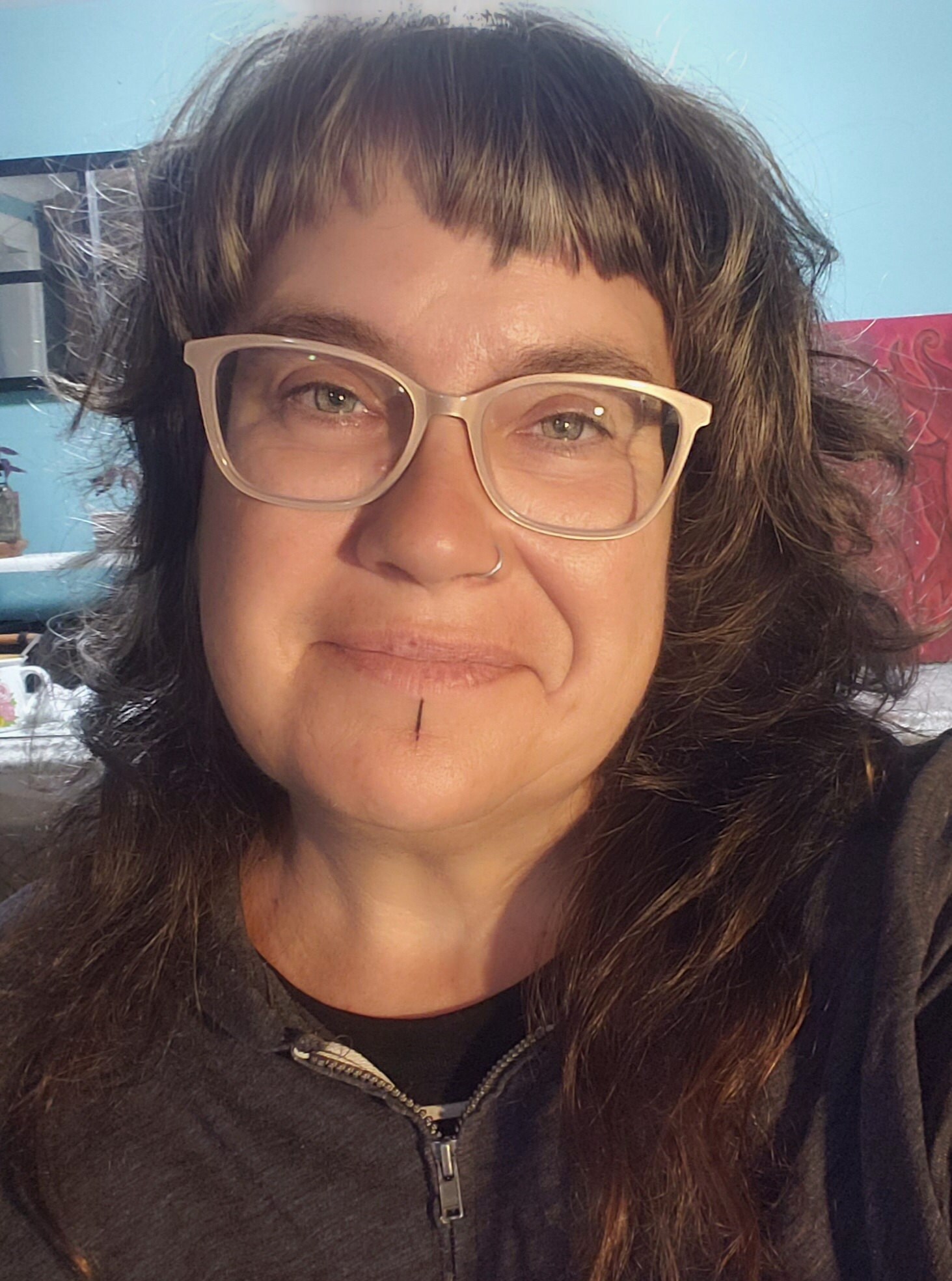Lea (Calvani) Bodea was raised in Budd Lake, NJ. She attended college in Rochester, NY, and received a BA in English Literature with a concentration in African and Women’s Studies.
After graduating, Lea spent the next 20 years in Charlottesville, VA. In 2016 she decided to move from a career in the fields of Autism, Child Development and Trauma and relocate to Baltimore, MD committing herself to making art as full time as possible.
While she was young, Lea’s voice was a spiritual, creative vehicle for her. She sang at church, in choirs, at school, talent shows, showcases and weddings. Her passion and practice in music continued into her early 20s—where, for the next decade she studied under several teachers of traditional West African rhythms and immersed herself in playing mainly a djembe. She played in classes and during meditation, in full moon drum circles, and with women’s groups—in small and large settings.
One of Lea’s early memories, around the age of 8 or 9, was first seeing a performance at the Newark Museum in NJ of traditional African drummers and dancers. That first exposure to the symbiosis of rhythm and performance, of the drum moving the body, and the cultural immersion of the ancestral roots of Africa, has informed a lifetime of musical and visual influence in Lea’s creative narration.
Music continued to play a central role when she moved to Virginia in the late 1990s. There, Lea played percussion, djembe, and a stand-up cocktail kit, while learning guitar, singing, and writing songs. She played in numerous collaborations, including The Dirty Dishes, Steve Momorella music, and actively toured with her lifelong friend and creative collaborator, the Robin Wynn Band.
In 2016, when Lea moved to Baltimore, she had assembled an extensive portfolio of 20 years of watercolor and ink work. While playing music and working in challenging careers, Lea was active in practicing spiritual/art therapy to better express her interior world.
From an early age, she remembers her grandmother Rose pulling out large size museum master coloring books for herself, while the kids would be scribbling in their Sesame Street or Barbie coloring books. Although Lea hasn’t confirmed with her cousins, she is convinced that she was the only grandchild allowed to share in the Monet, Van Gogh and Picasso images outlined in black—adding her own crayon pallet or following the colors of the cover photos of the original, alongside the matriarch of her family.
Growing up not far from New York, she was raised by parents who brought her and her brother to the city regularly. Lea’s early exposure to masterwork artists in the Metropolitan Museum of Art, the Museum of Modern art, the Guggenheim and the Whitey, and visiting the Hayden Planetarium, Madison Square Garden and Carnegie Hall, deeply influenced, inspired, and reinforced her creative path.
Lea is aware of the imprint that was made on her from seeing the works of Manet, Gaughan, DiVinici, Khalo, Van Gogh, O’Keefe, Dali, and Pollack as a young girl. Lea’s use of black lines in her artwork is directly influenced by her grandmother’s coloring books—as well as the stained glass of churches in the Catholic tradition and the cultural exposure her parents granted, how she was raised.
In 2019, Lea submitted several pieces of her work into a group art show entitled, “Cathartic, Art that Heals” at Atlas Gallery in Mt. Vernon. Since moving to Baltimore, she started meeting other artists and making connections. Lea began regularly showing her work at Artdromeda in the iconic Montgomery Ward Building, and was included in a group show during Artscape that year at Hancock Solar Gallery.
She immersed herself in going to gallery shows, supporting other artists and developed her own visual style of expression further. While living in Station North Arts District, Lea worked on canvas with acrylic paint, after using exclusively ink and watercolor on paper for decades.
Lea continued to explore acrylic paint on canvas in the linework and imagery echoing her early watercolor work into 2020. When the pandemic came, she went on an extensive exploration of more abstract representations. She moved back to her most familiar medium, watercolor paper, she learned to manipulate acrylic paint more than brushing it. She relied on the depth and emotion of the experience rather than the identifiable images that came from it, befitting the nebulous pandemic era.
After coming back to Virginia for a year, Lea took some time off from making art. She recognized that, as with music, sometimes you have to put it down and let the creative process ferment before returning to a new way of creating.
2023 brought Lea back to Baltimore County where she has been primarily experimenting with collage and acrylic paint. She has been working on a 12-piece collection which leans into more conceptual art. Lea sees working this way as combining elements of what is real and what’s unreal, working through the awkward transition or intersection between the exterior and interior worlds.
Lea has been building her website, while working at a garden center and as a home organizer.

